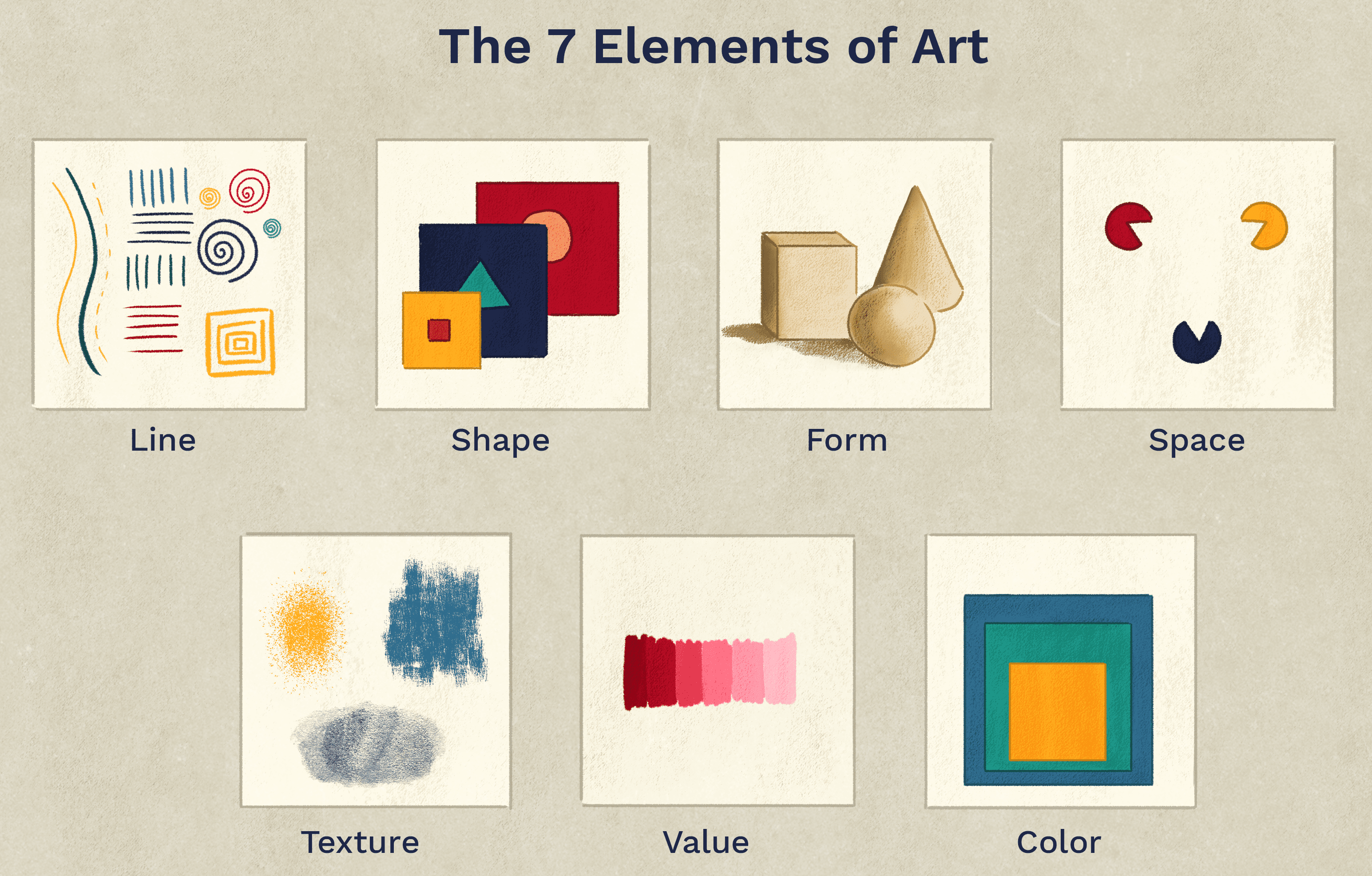Art Vocabulary 1: The 7 Elements of Art
Art Vocabulary:
The 7 Elements of Art
Line: A line is described as a moving dot. It is the most essential drawing element and can create shapes and contours. Lines can vary in thickness and texture, be used for shading, and create texture. They can be horizontal, vertical, zig-zag, curved, or various lengths.
Shape: Shape is the Element of Art that describes enclosed two-dimensional areas. Shapes can be geometric or organic.
Form: Form is the Element of Art that describes an actual three-dimensional shape or the illusion that it is three-dimensional. Forms have volume and take up space.
Space: Space is the Element of Art used to create the illusion of depth on a two dimensional surface. Space can be made with various strategies, including linear perspective, overlapping, size, and placement of a horizon line.
Value: Value is the Element of Art that describes a color's relative lightness or darkness. It can be created with tints, tones, and shades.
Texture: Texture is the Element of Art associated with how a surface feels or how it might feel if touched. Texture can be soft, rough, smooth, fuzzy, etc.
Color: Color is the Element of Art that involves reflected light. When light reflects off an object, a hue is produced. Colors can be primary, secondary, or tertiary. They can also be organized into color schemes such as warm, cool, or neutral.
